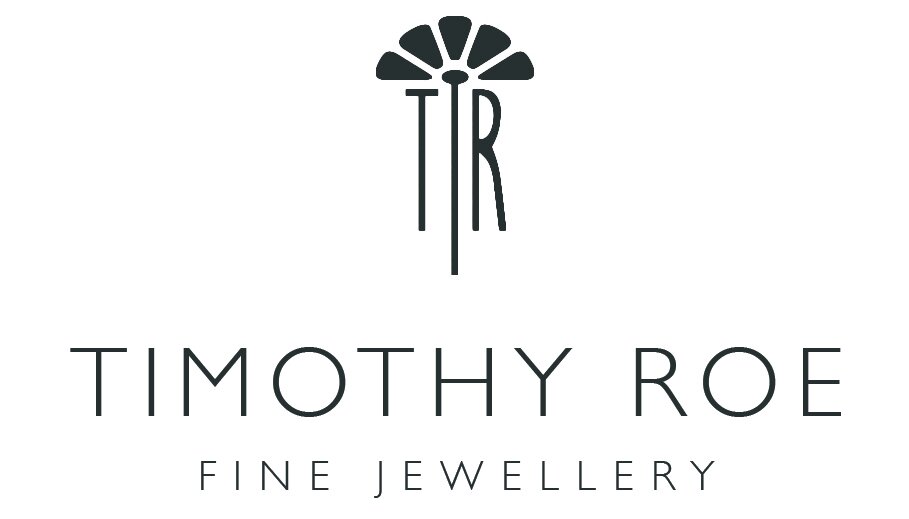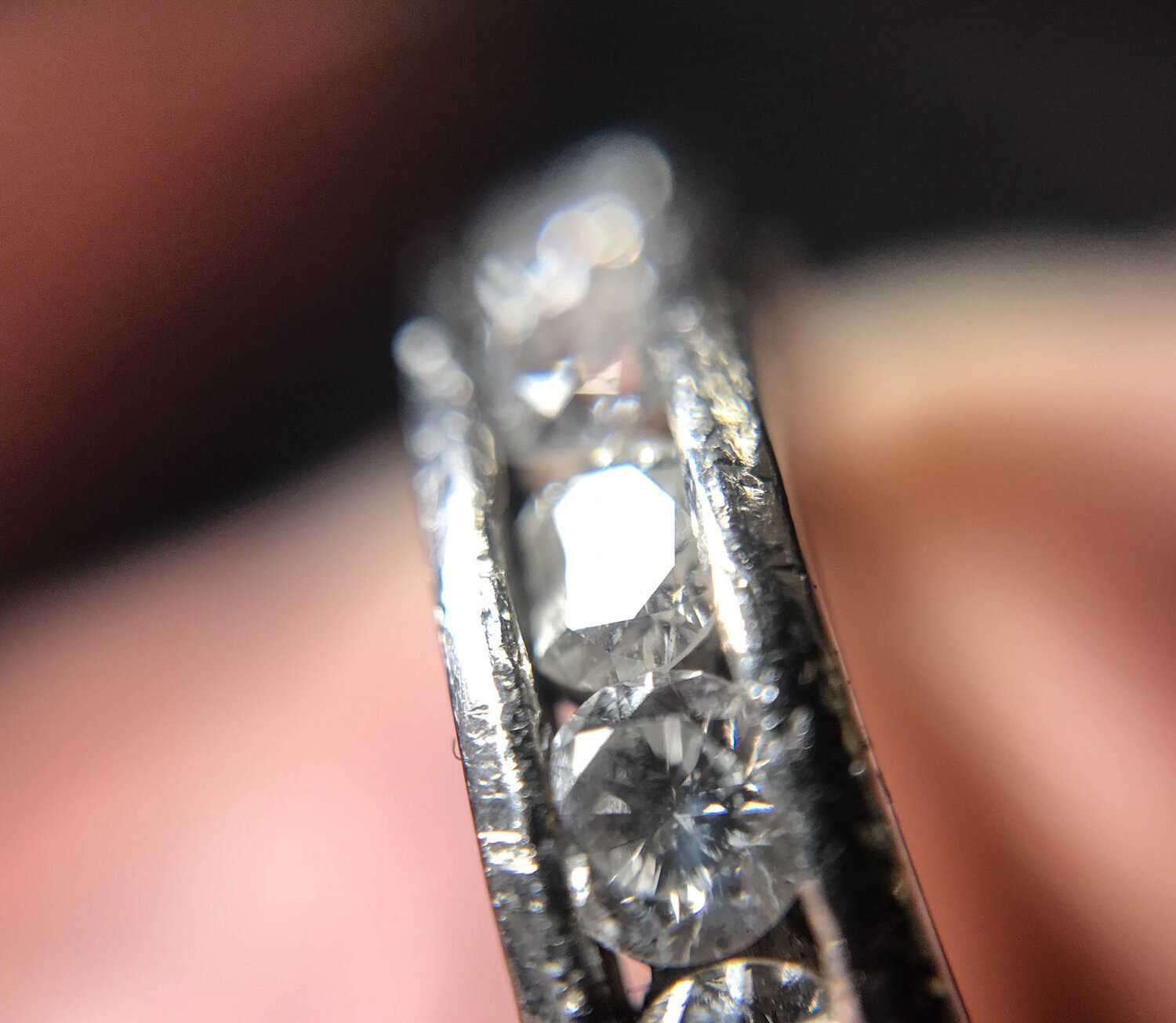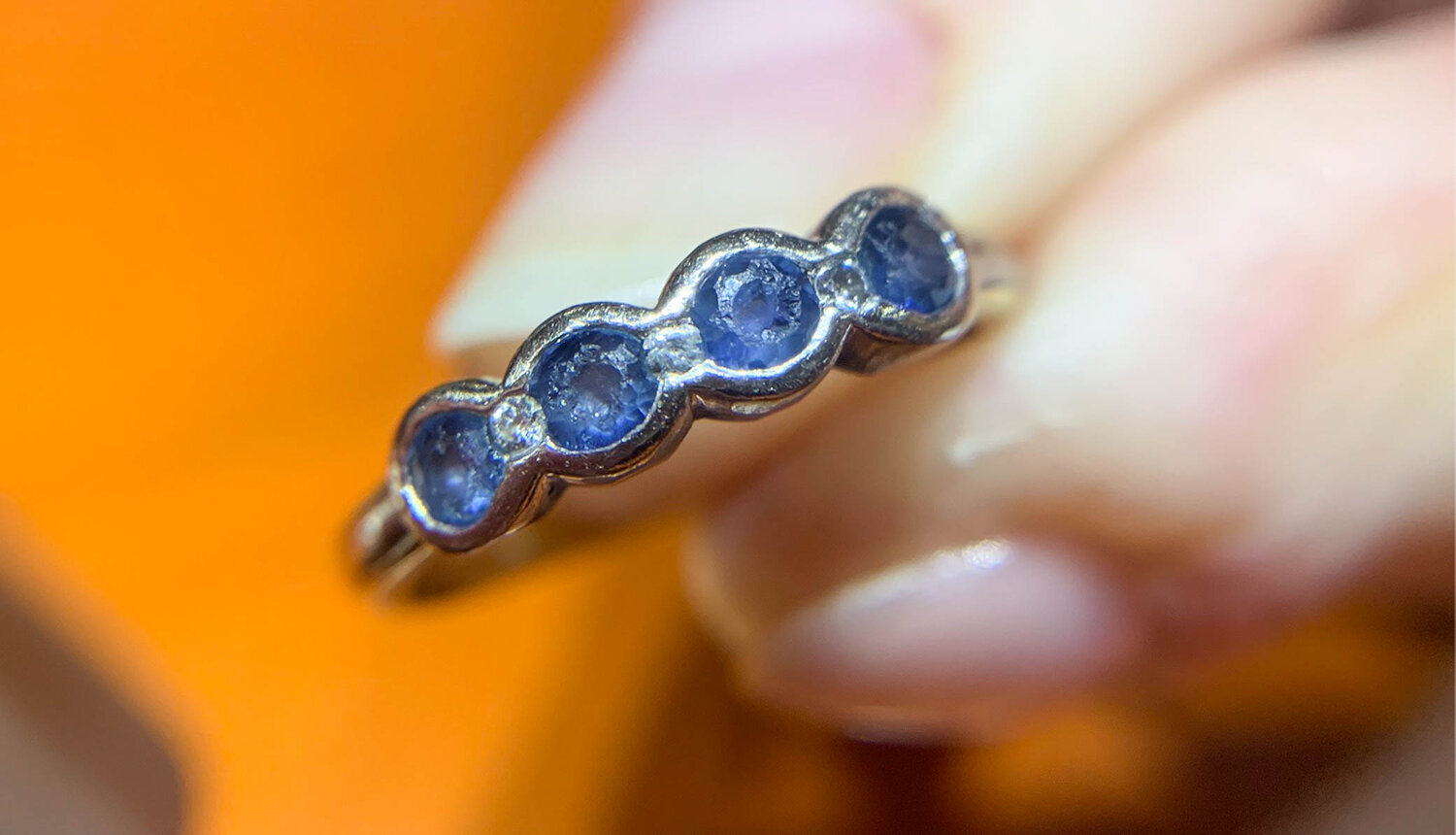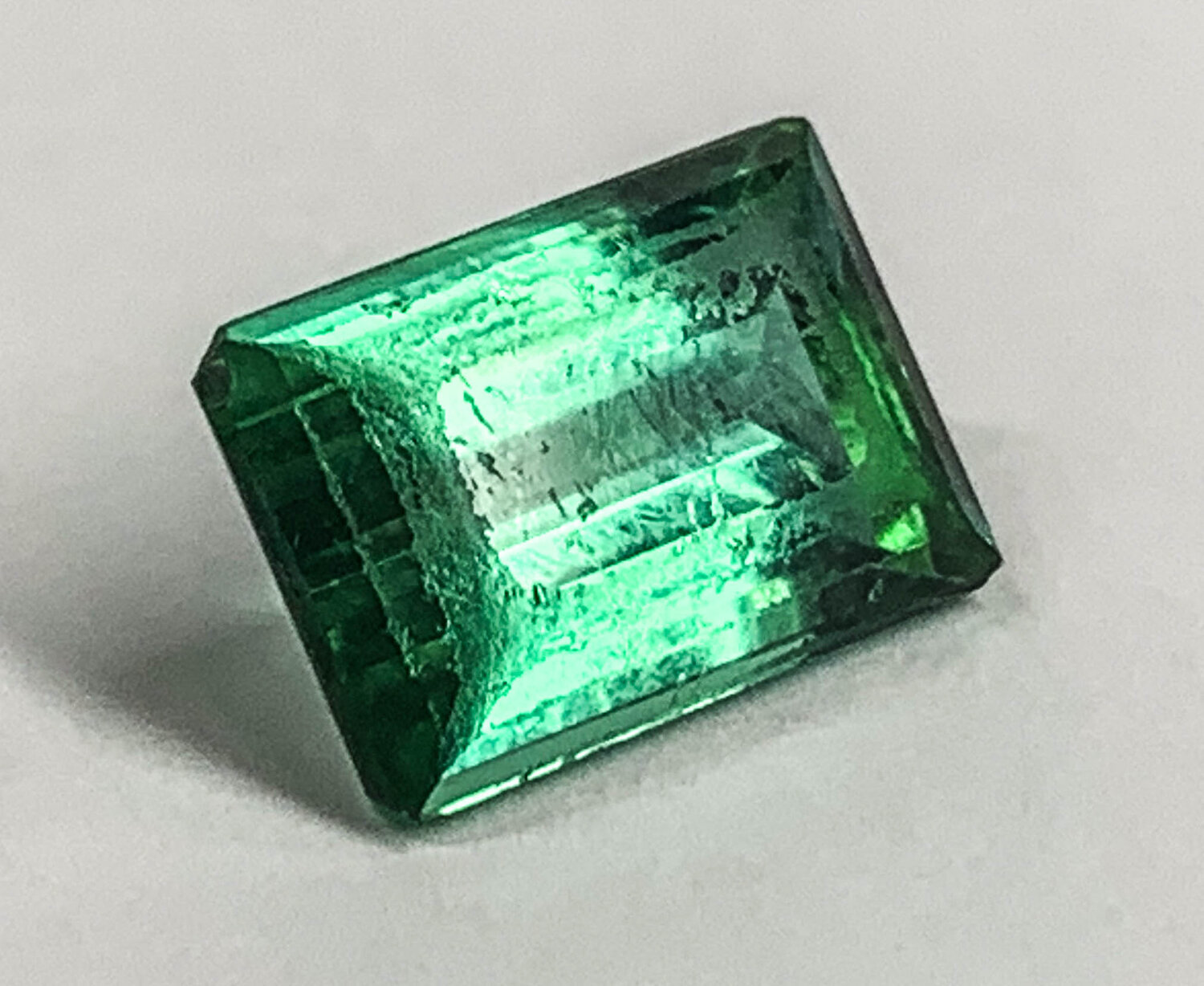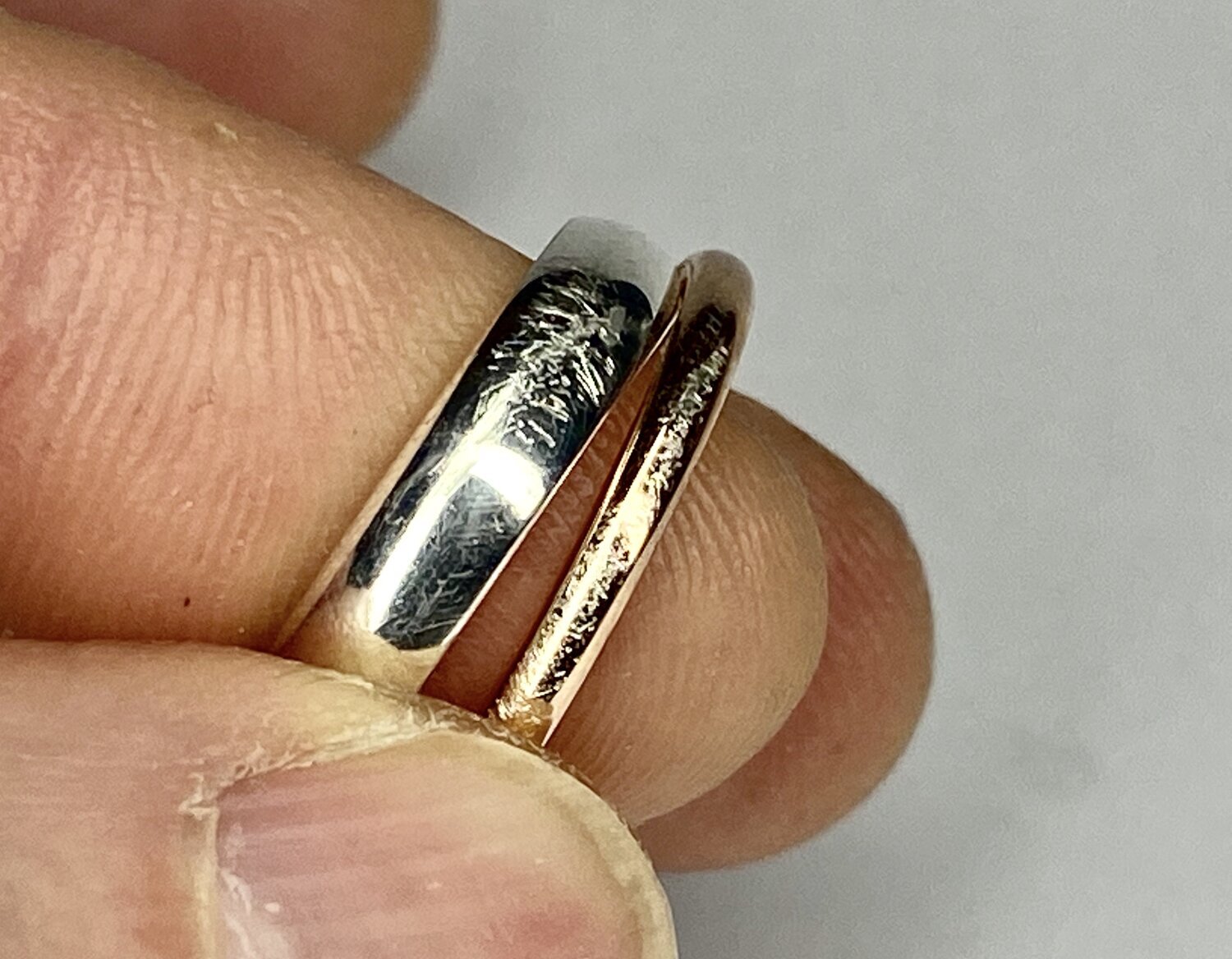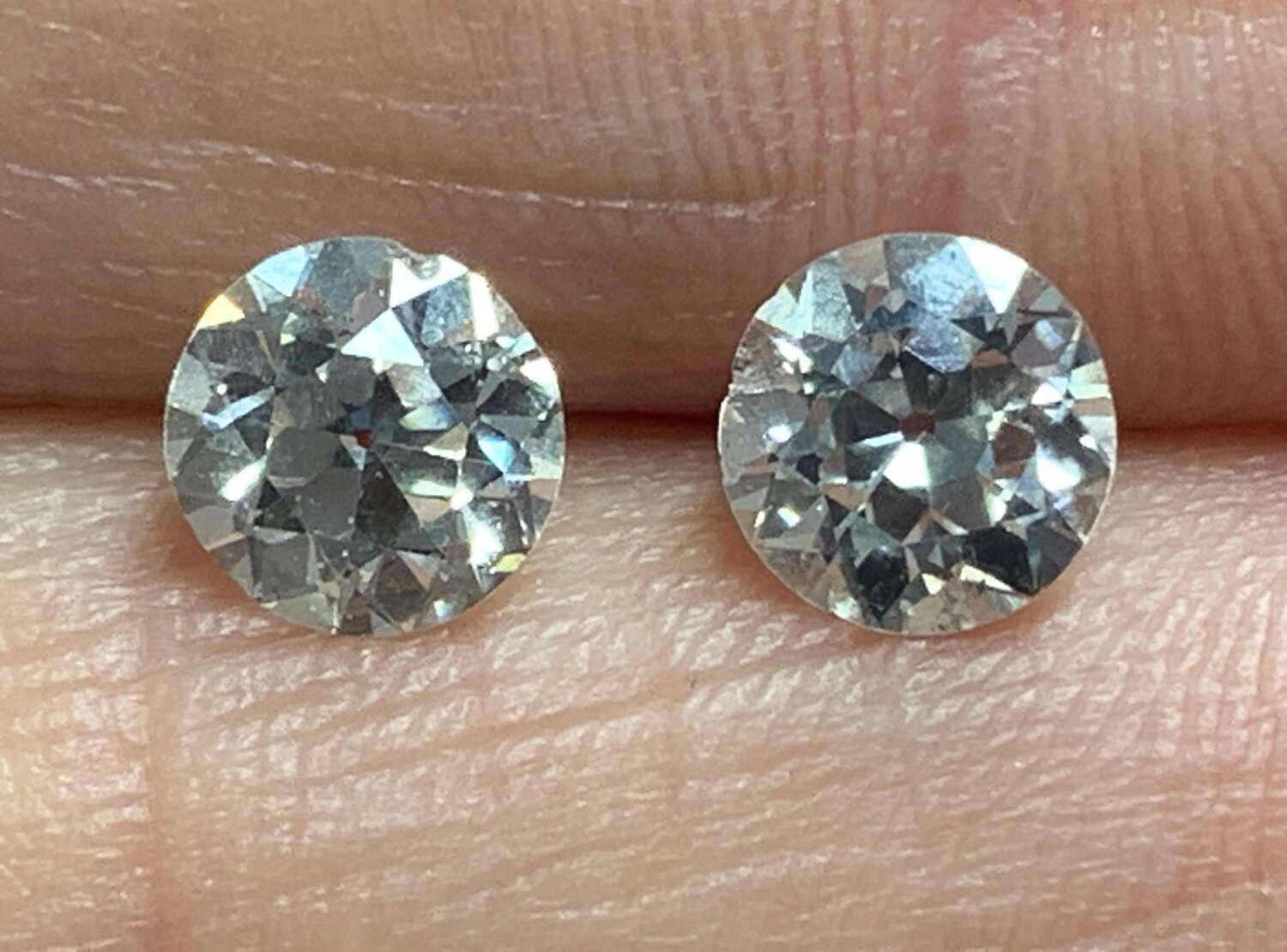Who would have thought that going to the theatre could be bad for your jewellery?
or How Not To Look After Your Diamond Ring…
And it’s not just the theatre - you can add going to watch your children in a school play, enjoying a concert or even a celebratory party to the list, the common factor, is showing your appreciation - by clapping!
As a jewellery business that has a full manufacturing and repairing workshop, we get to see or work on customer’s rings every day. They are in various conditions, with stones missing, claw tips broken off and scratched and damaged surfaces. Over the years we have worked on and examined these pieces and tried to fathom out how some of the damage had been caused. In some cases we took photos and a few of these are included below - those with a sensitive disposition and who love their jewellery may not want to read any further!
Image 1. Evidence of hard impact marks on the shoulder and setting edges that hold the tapered baguette diamonds. As the setting edge is still visible and complete, it is likely that the centre baguette broke in two and was then able to fall out.
“For our last number I’d like to ask your help. Would the people in the cheaper seats clap your hands? And the rest of you, if you’ll just rattle your jewellery.”
Sound jewellery care advice from John Lennon at The Beatles Royal Variety Performance in 1963
How does it happen?
When a ring or stone knocks against something else that is hard, there will usually be some sign of that contact. The more forceful that contact is, the more the impact will be noticed - this could be evidenced by small dents on the surface of a ring or a chip appearing on a stone - or maybe worse!
Image 2. Here we can see impact marks from a sharp long edge. The depressions are however smooth which shows it is likely to have been a polished surface rather than something like a piece of rough stone or something abrasive. There are many, many impact marks and it is not surprising that at least one of the diamonds has been broken (centre of image).
If you only have rings on one hand you should be safer but with rings on both hands - well this is where things can get nasty! The more enthusiastic any clapping might be, the harder your rings will impact on each other, hopefully the stones will stay upright on the top of your fingers but we all know that they can sometimes swing around and when stone hits stone, we can have the worst case scenario.
Image 3. Here we can see smooth, small, rounded impact marks covering most of the surface, worn sapphire edges and a broken diamond, all caused by banging against a claw set ring.
We remember making a beautiful pear-shaped diamond cluster ring mount for a customer’s own AAA quality tanzanite and we worked hard to get the ring finished for a special occasion.
A few days later we had the same customer bring back her ring with the centre stone in two halves - during the speeches and celebrations the stone was accidentally hit against her other rings and the tanzanite didn’t survive the collision.
Image 4, 5 ands 6. Before and after shots of possibly the most evenly “hammered” finish on a ring that we have seen. The solitaire had only a few marks near the diamond but the rest of the ring was covered. There is one impression near the diamond that is very clear and shows possibly the corner of another princess cut diamond and the L-shaped claw that held its corner (see close up image). We were able to re-finish the surface with careful re-surfacing and polishing to an almost new condition.
“Ahh but diamonds are the hardest natural material known to man, now they should be ok” I hear you say. Well they may be hard but a hit by another diamond, maybe on the edge or girdle, can chip a stone and if you are unlucky, can fracture the stone into two or more pieces. Also just hitting the stone hard enough or forcing it against a piece of hard metal could cause a breakage.
Lets look at the example of the glass on a mobile phone which like jewellery, is something we tend to have with us most of the time…
Over the years, the glass on the front of the latest phones has been getting harder and tougher allowing them to better withstand being dropped.
“Corning Gorilla Glass 5, a new glass solution that raises the bar for protection against drops higher than ever, surviving 1.6-meter, shoulder-height drops onto hard, rough surfaces up to 80% of the time” is the description given by one of the main manufacturers. But we all know that however hard the glass screens are claimed to be, they can still be broken.
Sometimes it is a drop onto a hard surface, sometimes it is being sat on or trodden on - they don’t like hard impacts and they don’t like being slightly deformed when sat upon and caught between you and the soft surface of your chair.
So like diamonds, other incredibly hard and strong materials can be still be broken and will still need a certain amount of care when wearing or carrying around.
Image 7 and 8. Before and After. A brutally damaged ring with a broken baguette diamond that clearly shows many large impact marks. Our skilled workshop were able to replace the broken stone and re-finsh and shape the platinum setting bars and the shank.
Image 9. Interesting impact marks with one showing the perfect shiny impression of the intersecting facets of a diamond from the ring that was doing the damage.
Image 10. This looks like another example of enthusiastic applause whilst wearing a ring on each hand. Broken diamonds and many impact marks from the other ring.
Image 11. This was a ring which we had made around 15 years previously. The centre diamond is broken and the sapphires have been worn and chipped with wear of some kind. This had happened over many years but it is not normal. In some cases, a cluster ring is sometimes worn resting on top of a slimmer eternity ring and I have seen the underneath of the central coloured stone, abraded by diamonds set into the eternity band.
Image 12. A green tourmaline unset from a ring which shows abraded facets and scratches. This was from many years of wear.
Image 13. The same stone after our lapidary has re-polished the facets.
The Gym
As part of our research, we gave a couple of newly polished silver rings (one gold plated) to a colleague who wore them during a single gym session and the shiny surface of the rings was soon scratched by the knurling on the grip of the weights she used. I wonder what effect the weights would have on any stones that were forced against the bars, certainly the overall shape of a ring might be deformed too.
Image 14. A silver and a gold on silver, once perfectly polished bands, after a short visit to the gym.
Image 15. No sign of any impact marks on the edge of the setting but the diamond has broken along the top edge most likely from a direct random impact.
Image 16. General wear and tear on this cluster ring but along the way one of the diamonds has had a bad knock and broken. The other stone has fallen out because the claw holding had worn thin and broken off.
Image 17 and 18. Two images of the same old European cut diamond where the top view hardly shows the chip but the bottom view shows how it can spread down the pavilion, sometimes right down to the culet.
Image 19. A pair of old European cut diamonds from a ring circa 1925. If you look carefully you can see some small chips on the girdle. These could be sent to a diamond cutter to remove the chips but of course the diameter and the weight of the stone would be reduced.
A Short Video On How Clapping Can Damage Your Jewellery
Summary
Over the years we have seen jewellery come to us for repair, refinishing, having gemstones or diamonds replaced and in some cases fully remaking due to accidental damage.
The list of causes of damage ranges from filing cabinets, shopping trolleys, door handles, visiting the gym, housework, clapping / applause after a speech at a wedding or visiting the theatre, catching on household appliances and ‘putting the top down’ on a convertible car!
We are always ready to help you in putting damage right with our skilled and dedicated workshop team on hand to offer advice and repair solutions, but it’s worth remembering that pieces of jewellery are luxury and precious items to be treasured.
